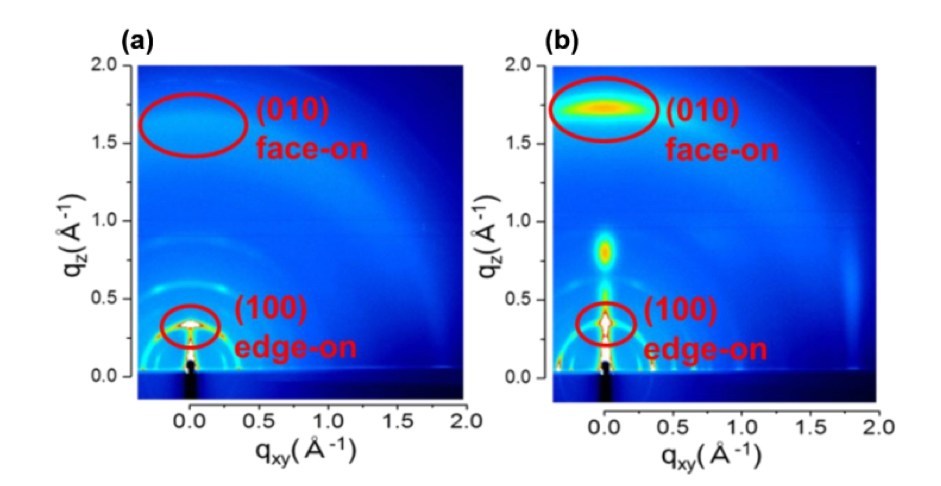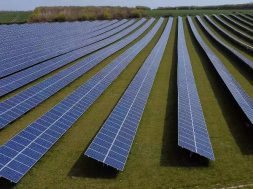
Kanazawa University Research: Highly efficient Wet-processed Solar Cells With Molecules in the Same Orientation
KANAZAWA, Japan: Researchers at Kanazawa University report in the journal Organic Electronics documents a new method for controlling the orientation of conducting molecules in organic solar cells that results in the enhanced light adsorption and performance of the cells.

Solar cells are a cost-effective, alternate source of energy. A subtype of these, organic solar cells make use of organic polymers inside the cell. Using these polymers makes the cells light-weight and increases their flexibility. Organic solar cells are produced by two different chemical methods: dry processing and wet processing, with the latter being a faster method. There are several parameters used to assess the efficiency of solar cells with absorption of light and transportation of charge being widely used.
A prevailing problem with the structure of organic cells is that molecules in the active organic layer responsible for light absorption and charge transport tend to face both towards the edges of cells, as well as towards the light absorbing substrate. Maximizing the number of molecules facing the substrate, however, is the key to maximising absorption and conductivity of the cell. Scientists have modified the dry processing method to achieve such an orientation, but it has not been possible with the wet method. The research team led by Tetsuya Taima at Kanazawa University, is the first to successfully do so.
The premise of their method is the introduction of a copper iodide (CuI) layer between the active molecules and the substrate. In their study, the researchers used a film of active molecules called DRCN5T and coated them onto either CuI/PEDOT: PSS (30 nm)/indium tin oxide (ITO) mixed substrates, or substrates without the CuI layer. The ratio of substrate facing to edge facing DRCN5T molecules was then compared between both. Subsequent high-resolution imaging revealed that the CuI containing cells had active molecules with a ten times higher substrate facing orientation, along with enhanced light absorption. The researchers attributed this altered orientation of the molecules to strong chemical interactions between the DRCN5T and CuI atoms. To further confirm this, DRCN5T molecules with bulky side chains that do not interact with CuI were used, and a higher substrate facing ratio was not seen.
This is the first study that effectively demonstrates a method of producing such efficient organic solar cells using the wet processing method. Besides saving time, the wet method also results in larger film areas. “This technique is expected to greatly contribute to the development of organic thin film solar cells fabricated by wet processing in the future”, conclude the authors. Their approach paves the way for producing high-performance solar cells faster.
Background:
Solar cells: Also known as photovoltaic (light creating voltage) cells, these devices convert light energy into electrical energy. The working principle of a photovoltaic cell consists of three steps. The absorption of light (sunlight or artificial light), results in the formation of electron-holes (exitons) pairs. These pairs are then separated, and electrons are carried through an active conducting layer, into electrodes, resulting in the creation of a charge. This phenomenon is also known as the photoelectric effect. In traditional solar cells, the conducting material is silicon. Organic photovoltaic cells usually have organic polymers in place of silicon. Solar cells connected in parallel, make up solar panels.
Reference:
Kohei Yamamoto, Md. Shahiduzzaman, Akihiro Yamada, Tomotsugu Takaya, Tatsuki Chikamatsu, Tomoyuki Koganezawa, Makoto Karakawa, Takayuki Kuwabara, Kohshin Takahashi, Tetsuya Taima. Molecular orientation control of semiconducting molecules using a metal layer formed by wet processing. Organic Electronics, 4th September 2018.
About Kanazawa University
As the leading comprehensive university on the Sea of Japan coast, Kanazawa University has contributed greatly to higher education and academic research in Japan since it was founded in 1949. The University has three colleges and 17 schools offering courses in subjects that include medicine, computer engineering, and humanities.
The University is located on the coast of the Sea of Japan in Kanazawa – a city rich in history and culture. The city of Kanazawa has a highly respected intellectual profile since the time of the fiefdom (1598-1867). Kanazawa University is divided into two main campuses: Kakuma and Takaramachi for its approximately 10,200 students including 600 from overseas.
















